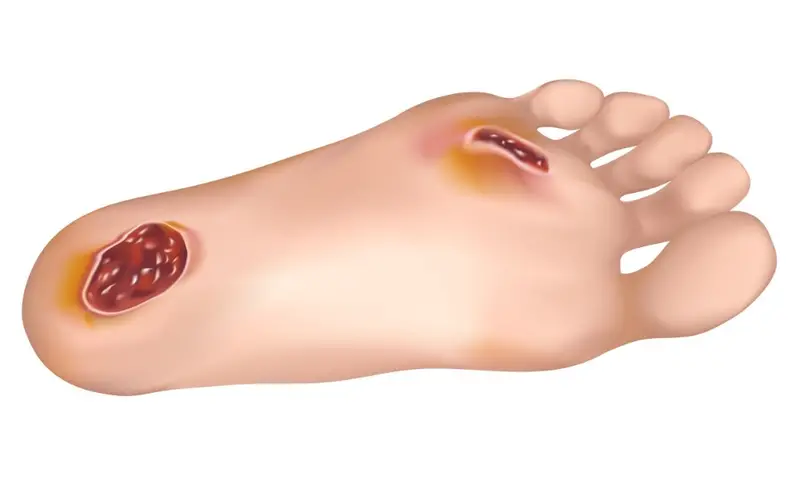Wound Care

Wound care is an essential part of healthcare that can be life-saving or life-altering. It involves treating and managing wounds, from minor cuts and bruises to severe lacerations and burns. Knowing the basics of wound care can help you better care for yourself or a loved one in an emergency. Let’s discuss everything you need to know about wound care – from identifying different types of wounds to understanding how to treat them properly and when it’s best to seek medical attention.
Diabetic Wounds Surgeon
What is Wound Care and Its Importance?
Wound treatment involves diagnosing and treating wounds, such as cuts, scrapes, burns, ulcers, and other skin injuries. A complete wound treatment can help minimize pain and discomfort while promoting healing. It also helps reduce the risk of infection by keeping the wound clean and free from bacteria. People with chronic health disorders or those who suffer from frequent wounds as a result of injury or surgery must treat wounds. By following proper wound care protocols, individuals can ensure that their wounds heal quickly and effectively.
Two Types of Wounds and How to Identify Them
Wounds come in many forms, ranging from minor cuts and scrapes to more severe injuries such as lacerations, bruises, or even gunshot wounds. Identifying the type of wound can be important for determining the best course of treatment.
Diabetic Wounds Care
Wounds are a very common complication of diabetes, affecting about 60 percent of people with diabetes. Minor wounds, cuts, and burns are an unavoidable but unfortunate part of life. These injuries, however, can have serious consequences for diabetics. Because ulcerated wounds have been exposed to higher levels of bacteria than other areas of the body with less circulation, they become infected more easily than non-ulcerated wounds.
Symptoms of Diabetic Wounds
- Diabetic Wounds Symptoms
- Large calluses or cracked heels
- Diminished ability to sense hot or cold
- Darkened skin on the affected area
- Foul Smell Coming from the Wound
- Blisters, Itching and Painful Swelling
These symptoms may worsen over time if not treated properly. It is essential to seek medical attention right away if you notice any of these symptoms to ensure proper diabetic wound care and prevent any further complications.
Diabetic wound care:
Diabetic wounds are common and can be painful. They are also a source of infection and may require surgical treatment. The most important thing to do when you see a diabetic wound is to clean it well. Then, check for any signs of infection or damage. If you suspect that there is an underlying problem, such as a damaged nerve or ulcer, so you need to consult immediately with Diabetic Wounds Care Specialist.
Foot or Leg wound care
A foot or leg wound is a severe injury resulting in infection and long-term complications. If you are injured and notice an open wound, it’s crucial to identify the type of injury and seek medical treatment immediately.
There are 3 types of foot or leg wounds:
- Closed wounds – a clean cut that has healed over.
- Open wounds – an open wound that has not yet completely healed.
- Shallow wounds – a shallow wound that still shows signs of recent inflammation (redness) but has no tissue damage or dirt in the wound.
Symptoms of Foot or Leg Wounds
- Appear red, yellow, brown, or gray.
- Drain fluid.
- Look swollen or bleed when irritated.
- Leg swelling or cramping.
- Hardened skin that is purple, dark red, or brown.
- Itching and tingling.
- Dry, scaly skin.
- Fluid-filled blisters.
- Rash or redness.
Foot or leg wound care:
A foot or leg wound can be a severe injury, and you should seek immediate medical attention. The following are some tips to help you heal from a foot or leg wounds:
- Don’t try to walk on the injured part of your foot or leg.
- If your foot or leg is numb, do not attempt to walk on it. Instead, remove it from the shoe and keep it elevated as much as possible.
- Put a towel between the injured area and your skin to prevent further injury.
- If your skin is broken open anywhere on your body, do not apply any pressure until a doctor sees you.
Common Causes of Wounds and How to Prevent Them
Wounds are common, ranging from minor scrapes to more severe gashes and lacerations. While some wounds may be unavoidable, some steps can be taken to reduce the risk of getting them. In this article, we’ll explore the most common causes of wounds and discuss how to prevent them. We’ll also look at tips for proper wound care if you get injured. Understanding the common causes of wounds and taking preventive measures can reduce your risk of injury and ensure faster healing time if a wound does occur.
Schedule a Wound Care Consultation
Many factors can cause wounds, ranging from minor cuts to deep lacerations. Knowing how to treat different types of wounds is essential to ensure they heal properly and quickly. Schedule a call with Dr. Farshad Malekmehr for a proper examination of diabetic wounds and ulcers, or visit our institute at Encino, CA. You can also use our online contact form.
Proudly accepting patients in